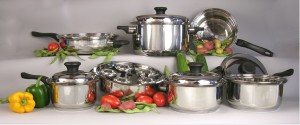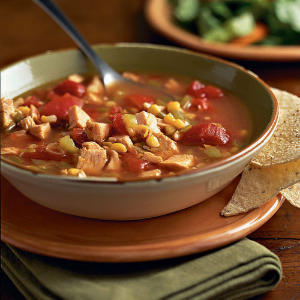Although the government is claiming unemployment is at 9- 10%, it doesn’t account for people who have given up looking for work, self-employed people who have seen a drop in income, or people who are underemployed.
Duane and I were unemployed for about 15 months before he found work. During that trying time, we didn’t have any savings or unemployment to fall back on, so I do deeply empathize with any family facing unemployment or underemployment.
I offer the following article, written by Kathy Brodock of Teacher of Good Things, as food for thought for your family to consider about adult children living at home. I don’t necessarily agree with everything, but I do think there is a lot of valuable insight worth your consideration.
I personally would be delighted to have my older children living with me (since I’m a widow), but living in a small town there are few jobs, and no community college means there are few opportunities and social outlets here for recent high school graduates.
I hope you will read Kathy’s insights on why she thinks it is cost effective for adult children to live at home. I also would love to hear how your family is addressing the economic downturn in creative, practical ways in the comments section below.
 Why Living as a Family Makes Good Cents by Kathy Brodock
Why Living as a Family Makes Good Cents by Kathy Brodock
Auto Insurance – Our adult children can be on our auto insurance as long as they live in our house. They pay their portion, which is a lot cheaper that getting their own.
Family Phone Plan – We have 5 phones on our plan, one belongs to my mother, who also lives here, we each pay a share and divide minutes. Our girls are allowed a smaller amount of minutes because they don’t ‘need’ as many, so they pay less. If they abuse the privilege of the family plan they are removed and can get their own plan and pay more!
Health Care – Our adult children can stay on our Samaritans Family plan until they are 22, as along as they live at home. Yes, they (over 18 years old) pay a portion of this.
Gym Membership – We can get 2 adults and 4 children (until age 22 or 23?) on one family plan. Our gym allowed my mother to be part of our family plan since she lives with us and is a senior. So we split the gym cost each month which comes out to about $18 a month each…can’t beat that!
Groceries – Sometimes our girls (16 and 20), will buy groceries needed for a special meal they want to prepare or for an event.
Rent – When our son lived at home he had to pay rent, a small amount each month to cover his room, meals, laundry, water, etc… This is called being a man! We do not require our girls to pay rent, but when they wanted a pool, they paid for the water to fill it, if they want things built in the yard for their domain they help pay for materials.
Vacation – We always share vacation expenses with our adult children, we usually pay the bulk of it, but they always chip in. When we take long trips they will offer to fill the tank once, or buy breakfast, etc… Our last trip our 19 year old paid for a separate room (one night) for her and her sister to make it more comfortable for all of us (Grandma was traveling with us too).
Saving for the Future – This is the perfect time for our older children to be saving and investing. Because they share expenses as a family it allows them to build up savings for their home one day.
It is TIME effective to live together and share:
Work Load/Chores – One of the greatest advantages of living as a family is that the more strong, skilled hands there are, the lighter the work load. When all of us are working in the yard it is amazing how fast things get done. When there are three of us cleaning this house at one time it is done in a flash, which leaves more time to ‘play’.
Trips and Outings – If one of us needs to go to the store we try to combine trips. I prefer to send a list and debit card and not go, I spend less money that way! ;o)
Education and Ministry – When adult children are still living at home and sharing expenses and responsibility, they have MUCH more freedom to focus on continuing their education (academically and skill wise) and searching out ways to minister to needs in the community. When one person has an apartment, paying rent and utilities, doing all the upkeep themselves, it really limits their time of learning, ministering and playing. 🙂
There is a LOT of give and take.
Because we live together as a family we have to be considerate of each other. This is not a hotel where people come and go and do as they please, we are a family. We let each other know where we are and what we are doing. When we make plans/spend money we have to consider how it will effect the family as a whole. Big decisions need to be discussed with Dad, house rules need to be honored.
Living as a family, even when the children are ‘of age’, is not always easy, it’s downright hard some days. Parents need to learn to let them be adults yet keep house rules and order in the home. It is a constant balancing act. Throw in a grandparent and it becomes even more tricky.
If your adult children are used to living as a family, used to considering others first, used to compromise and loving people, they will adjust to being married and parenting much easier than children that can’t wait until they are 18, to get out of the house and be totally independent. Most people that live by themselves, only seeking their own happiness and net gain for 10, 20, even 30 years will most likely have a hard time adjusting to living as a family.
Living as a family not only saves money, but it also brings safety, accountability, support, encouragement, sacrifice and LOVE.
Follow me at Facebook: http://www.facebook.com/urbanhomemaker
 This class is based on the book, The Gut & Psychology Syndrome by Dr. Natasha Campbell-McBride also known as the GAPS diet. The regime is based on the Specific Carbohydrates Diet originally created by Dr. Sidney Valentine Haas.
This class is based on the book, The Gut & Psychology Syndrome by Dr. Natasha Campbell-McBride also known as the GAPS diet. The regime is based on the Specific Carbohydrates Diet originally created by Dr. Sidney Valentine Haas.







